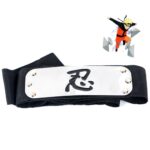When we talk about fasteners, most people think of bolts and screws. But there are many different types of tools used for fastening. Let’s take a look at the various types of fastener tools.
There are several types of fastener tools that can be used to make your life easier when it comes to assembling things together or taking them apart. For example, you can use a screwdriver to turn a bolt with a nut on it. Or a wrench to tighten a bolt head onto a threaded rod.
In the long run the option will give some good results to the people. A person can plan to be on Scrooz Fasteners Joist Hanger range and get the good results. In the long run the option will prove to be highly productive. The goals of the person will be achieve. They will get the quality for the retuns.
But let’s say you’re using an electric drill to tighten a nut. This is a fairly new development in technology. Before this, tightening nuts was quite difficult because the ratchet action of the drill made it hard to get any sort of grip on the nut to loosen it.
This problem has now been overcome by the addition of a special tool. It’s called a’socket’ and it enables you to apply more pressure to the nut than the ratchet action of the drill would allow.

The socket can also be used as a replacement for pliers in some situations. So the next time you need to tighten up something, don’t just reach out and grab a pair of pliers. Instead consider grabbing one of these handy tools instead!
Another common type of fastener tool is known as a’screwgun’. Again, they aren’t particularly pretty, but they are very useful. They are designed to shoot a long (or multiple) lengths of screw into wood or metal quickly.
They work by having a spring loaded cylinder which contains a number of small balls inside. As the screw gun is fired, these balls move rapidly from one end of the cylinder to the other. When they reach the far end of the cylinder, they come loose and fly out through the barrel. These then hit the target in much the same way as a shotgun does.
Screw guns have a wide range of uses, from hanging pictures on walls to attaching panels of metal to frames. You’ll find them in almost every hardware store around the world.
These are two examples of hand held tools. However, there are larger versions of these tools too. These are known as ‘power drivers’. They often have a large handle so they can be operated by one person.
If you want to put a piece of furniture together, for example, you might not want to spend all day doing it. A power driver will help you do it much faster. If you were going to assemble a table top, the power driver could be used to drive four 8mm nails into each corner of the top.
Once these nails were in place, the table top could be lifted off its base without using any further tools. And if you wanted it to stay upright, you’d simply use another nail to fix it down to the base.
Power drivers have a number of advantages over hand tools. First of all, because they have a high torque motor, they can deliver a lot of driving force without breaking. That means that they can drive nails harder and deeper than ordinary hand-held drills.
Secondly, because they generate their own electricity, they don’t need batteries. Which means that they won’t run down after a few minutes of use. Thirdly, they can be operated from a remote control.
So you could sit in bed and press a button on the remote control and your table top will be assembled within seconds. Finally, power drivers also have a variety of attachments available. So you can attach a circular saw blade to the back of the driver. Then, with a little practice, you can cut intricate shapes into wood.
For example, you could cut out the shape of a flower using a pattern as a guide. Once the flower had been shaped, you could glue it to the side of a cabinet.
However, even though power drivers are very powerful, they aren’t always suitable for everything. For example, when drilling holes, you must keep the drill bit perpendicular to the surface. Otherwise, the hole could become skewed.
There are also limitations to how far you can drive a nail with a power driver. Because of this, you should avoid using them for framing lumber.
Now we’ve looked at the various types of fasteners tools, what about the various types of fasteners themselves? Well, there are thousands of different kinds and sizes of fasteners that are used today. Some of them are made of steel, others are made of aluminum or plastic. Others are made entirely of titanium.
Most of them are designed to fit standard sized holes, although there are some exceptions. Sometimes, you may have to drill a pilot hole first before installing the fastener.
Some fasteners are designed specifically for certain applications. For example, some fasteners have flanges that make them suitable for attaching a panel to a wall. Other fasteners have a pointed tip, making them ideal for nailing wood beams to concrete.

And some fasteners are designed for specific applications. For example, you may come across fasteners that are designed to be used in the home, such as those used to hang picture hooks from the ceiling or hold curtain rods to the ceiling.
Another factor that influences the selection of fasteners is the material to that the fastener is attached. Metal fasteners will work best on a metal sheet. But they can damage wooden surfaces. Plastic fasteners are better suited to non-metal sheets like plywood.
It’s important to note that fasteners only work properly if they are installed correctly. Therefore, before you install any fasteners, check the manufacturer’s instructions to ensure that you follow them properly.
It’s also important to remember that fasteners are intended for temporary purposes. After they are installed, they shouldn’t be left in place permanently. In fact, it’s best to remove them once they have served their purpose.
Finally, it’s worth bearing in mind that fasteners shouldn’t be used in a manner that causes them to fail prematurely. For example, try not to hammer fasteners into solid materials. Instead, use a mallet or a hammer.
Also, fasteners should never be placed under extreme stress. For example, you should not use a hammer to drive metal fasteners into the brickwork. Instead, use a jigsaw or a drill fitted with a drill bit that matches the size of the fastener.
Fasteners are extremely versatile. They can be used to secure anything to anything. So whether you want to hang curtains, build a bookshelf, or fix a leaky pipe, there’s probably a fastener somewhere that will do the job.







